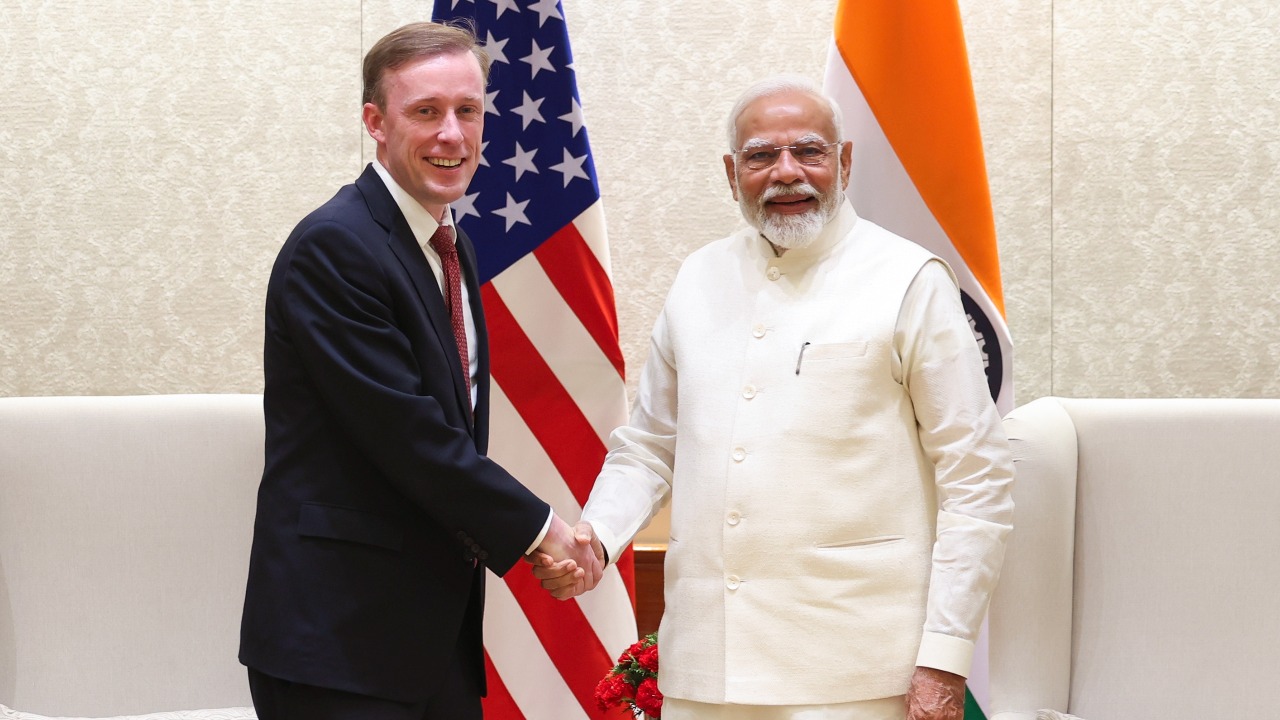Behind the sheen of the beauty market

At the recently held Startup Mahakumbh in New Delhi—a first-of-its-kind event that brought together the entire startup ecosystem of India—Falguni Nayar provided a valuable insight on India’s consumption story in the constantly-evolving beauty and personal care (BPC) space.“India is where China was 15 years ago,” said the executive chairperson, MD and CEO of Nykaa, a digitally-native, consumer-tech company started in 2012, whose brands Kay Beauty, Nykaa Naturals, Nykaa Cosmetics and Wanderlust are now household names in both online and offline destinations across the country.
“Given the S-curve of expected increase in per capita income from $2,500 today to $5,500 by 2030, similar to China’s trends, we anticipate the BPC per capita spend to go from $15 today to $50 by 2030. As reference, Nykaa’s BPC spend is currently $80 vs the country’s average BPC spend of $15,” said Nayar.Nayar’s statement resonates with the current BPC scene in India. Consumers today are conscious, looking, and willing to spend, for products tailored to their individual needs for self-care and wellness. They are also willing to pay premiums for scientifically-backed, niche ingredients and processes. As a result, brands are jumping on the bandwagon, making differentiating choices to find success in the increasingly competitive BPC landscape.
According to a report released by Redseer Strategy Consultants and Peak XV Partners in September last year, the dynamic BPC market in India is expected to touch $30 billion by 2027, making up for about 5% of the global opportunity. No wonder many global beauty brands have forayed into the Indian market. There has also been a rise in the number of new-age, homegrown brands and online/ e-commerce platforms offering products in the segment.
They have been quick to democratise product innovations across the price spectrum, making it fiercely competitive for players.Last year, actor Kriti Sanon launched a skincare brand Hyphen along with PEP Technologies, the parent company of mCaffeine. Posting the brand’s review since its launch in July 2023 on LinkedIn, Tarun Sharma, co-founder of mCaffeine, said, “The brand is surprising with 100% growth and set to beat our extremely audacious target of achieving 100-cr mark within 12 months of its launch.”
The BPC landscape’s transformation also birthed Tata CLiQ Palette, a personalised beauty discovery and shopping app from the house of Tata CLiQ, last year. Its USP, as per the company, is its beauty ID technology that helps consumers to find their right beauty match across categories. “Consumers are looking for personalised experiences and products, easy discovery while shopping, convenience of use, engaging content that educates and informs them, product assortment, high-quality products, and competitive pricing. Offering a holistic experience will go a long way towards winning consumers,” says Gopal Asthana, CEO, Tata CLiQ.Last year, Reliance Retail launched Tira, an omnichannel beauty retail platform offering a curated assortment of global and homegrown brands. Tira recently opened its first store in north India and the 10th in the country, at the capital’s retail destination, DLF Avenue, Saket, after opening its doors to beauty enthusiasts in Mumbai, Hyderabad, Chennai, Bengaluru and Pune.Meanwhile, Soezi, the premium press-on nail brand co-founded by Bollywood actor Sonakshi Sinha and Srishti Raai, launched its first offline retail presence in Pune this year. The company has seen a 3.5x growth since its launch in 2022. “To make the experience tangible, we are expanding through retail, establishing kiosks in various tier 1 and tier 2 cities. Internationally, our presence in Africa has garnered a positive response, and our ambitious plan for the coming year includes penetrating the Middle-East and South Africa,” adds Sinha.
The demand for multi-functional products that offer both convenience and efficiency are also gaining popularity. “We had products in smaller capacities like tinted lip balms, SPF-infused makeup and kajal-plus-eyeliner sticks. But now active ingredients like vitamin C, salicylic acid, or hyaluronic acid are being encapsulated into face and body washes, creams, makeup primers, and hair masks. Men are comfortable with wearing makeup, and influencers are constantly playing with colour cosmetics and creating refreshing new looks—all adding excitement and vibrancy to makeup routines,” says Zeba Khan, director, beauty, personal care and luxury beauty, Amazon India.Most of the new-age brands promise ‘clean’ and ‘natural’ products that are all the rage now. No wonder brands like Forest Essentials, Kama Ayurveda and Just Herbs have been particularly successful on e-commerce platforms such as Amazon. In fact, the demand for clean beauty remains strong in the luxury beauty category on Amazon Beauty. “We have seen 40% y-o-y growth in business from clean beauty brands, both global players and homegrown favourites, within the luxury beauty segment. This trend is echoed globally, with the clean beauty market projected to reach $22 billion by 2024, growing at a CAGR of 9.5%,” adds Khan.
Betting on beauty is paying off. Honasa Consumer Ltd (HCL), which owns Mamaearth, reported a strong performance in Q3 FY24 with revenue growth of 28% and PAT growth of 264% YoY. But its Q3 results are a testimony of a deep understanding of the beauty market in India. Its certified colour cosmetics products under Colorcare became a promising category, which reached the Rs 150 crore Annual recurring revenue (ARR) mark, with over 10 lakh colour care units sold in Q3FY24.“The months gone by have seen enhanced competitive intensity. Three months back, there weren’t any urban growth concerns that companies were looking at, but it started with the festive season not going well for the e-commerce players in terms of the overall traffic and growth, followed by a bleaker winter in the last quarter. With general trade not growing for most companies and consumption slowing down, and inventory increasing, this led to a very high discounting seen from most players, be it incumbents or the younger players in terms of number of days of discounts or the steepness of discounts which have gone up. Hopefully, post-elections, this should change and growth should come back,” says Varun Alagh, chairman and CEO, HCL.HCL’s The Derma Co brand achieved an EBITDA positive status year-to-date, buoyed by products such as serums, sunscreens and face wash.
“Discounts are on e-commerce platforms, exclusive brand outlets, and retail partners in both modern trade and general trade outlets. Our penetration is strong in tier 2 and tier 3 cities, where we’ve witnessed significant traction and engagement,” says Zairus Master, chief business officer, Honasa Consumer.As per Megha Asher, co-founder of Juicy Chemistry, the homegrown organic personal care brand that started in August 2014, has witnessed a revenue growth climbing from Rs 45 lakh in its first year to a staggering Rs 30 crore in FY 2022-23. The brand has diversified its product range, unveiling an exciting line of organic makeup, Color Chemistry, in 2022.
Conscious consumers
Today, Indian consumers are spoilt for choice, looking for tailormade products, says Pranav Arora, MD and lead, consumer goods and services, Accenture in India. “There is also a growing trend of premiumisation where consumers are willing to pay more for scientifically-backed, niche ingredients and processes,” he adds.Indians have also been mindful of the price-to-benefit ratio, rather than simply being budget-minded, says Tanya Rajani, principal beauty and personal care analyst, Mintel Reports India. “In the current uncertain and volatile environment, with a positive financial outlook, consumers are being extra cautious but, as per Mintel consumer data, are not entirely cutting back on their spending,” she adds.
According to Mintel’s 2023 Trend Intentional Spending, consumers are reevaluating what is most important to them, and what defines ‘value’ in products according to their needs. In fact, highlighting the value in beauty is essential and can be driven by offering discounts and promotions, more than three in ten Indian consumers claim that they would be encouraged to shop online with the incentive of discounts/ promotions and this over-indexes not just the tier 2 but Indian metro residing consumers as well. E-com majors like Amazon and Myntra are dealing with an educated customer base constantly challenging retailers to cater to their evolving and diverse beauty needs. As such, Amazon Beauty has access to a curated yet exhaustive selection of international brands, trending ingredients, new launches and rare finds at competitive pricing.In November 2022, Amazon launched ‘The Beauty Sale’, a bi-annual shopping event that brings together the best of makeup, skincare and luxury beauty brands to customers with deals and engaging content,
along with fast delivery and convenience.“Approximately 80% of our new customers are from tier 2 and 3 cities. We are investing in cutting-edge technologies to elevate their shopping experience,” says Khan.Meanwhile, Myntra has identified beauty as the next growth engine and has ramped up technology investments such as virtual try-ons, product finders and AI skin analysers. In an interview with FE, Anmol Sikka, senior director and head, beauty and personal care, Myntra, said, “With our penetration in fashion, we are entrenched into affluent pockets and extending the synergies to build our beauty portfolio. Till date, over a third of Myntra shoppers have experienced beauty, so we are sitting on a big base of premium shoppers and have huge head room to build adoption for Myntra Beauty.”Myntra has also seen a significant increase in the number of male shoppers buying skincare products on the platform. In 2023, Myntra Beauty witnessed a 200% y-o-y growth in men’s skincare products.
Rising competition, deep discounts
The rise of direct-to-consumer (DTC) brands has disrupted traditional retail, while consumers’ evolving preferences for transparency and sustainability have raised the bar for players. This dynamic shift is propelled by the projected surge in Indian consumers’ per capita gross income, by as much as 138% by 2040, says Sukhleen Aneja, CEO of Good Brands Co, The Good Glamm Group, which has over 15 million transacted customers and 25 million loyalty programme members, processing 1.5 million orders per month. The brand’s website contributes over 50% of the total revenues and its DTC growth has been powered by repeat orders.“The increase in disposable income gives scope for beauty brands to penetrate in the market further. Increased investment and the democratisation of brand promotion through social media have fuelled the emergence of niche players. In this dynamic landscape, innovation and a deep understanding of consumer needs are essential for brands to thrive,” she says.
For makeup brand Swiss Beauty, the competition is intense too, arising from customer’s personalised experience. The brand capitalises on extensive online and offline presence by offering deals during topical periods like Diwali, Holi, Navratri, wedding season and notable sale events like Pink Friday, Prime Day. “This approach has led to a notable increase in consumer interest and traction, allowing us to maintain a strong connection with customers and giving access to premium products at appealing prices,” says Saahil Nayar, CEO of Swiss Beauty, which has an offline presence since 2013 with over 25,500 retail touch points spanning across over 550 cities. Up to 60% of the brand’s business comes through offline channels.According to Kaushik Mukherjee, co-founder and COO of SUGAR Cosmetics, competition is intense because beauty is an under-penetrated category.
“We are far behind other developed beauty markets in terms of the number of brands. The competition won’t decrease in the next five years and there’s a lot of brand discovery in the mass and masstige segment. This category is close to creative expression where consumers are looking to try out new products,” he adds.Amid the intense competition, brands like Juicy Chemistry, Mamaearth, Plum and mCaffeine, or e-commerce platforms such as Good Glamm, Nykaa, Myntra and Amazon are offering innovative shopping experiences or deep discounts via Cyber Monday, Black Friday, Holi-day, Diwali bonanza, and Spring sales. From ‘buy one get one’ to flat 50% discounts on purchases, every brand has something to offer.
For instance, Nykaa in the Pink Friday sale during the third quarter augmented sales in FY 2023 delivered 40% growth in gross merchandise value (GMV). Executed on the Nykaa Beauty app, physical stores, Nykaa Fashion and Nykaa Man platforms, the brand generated over 400 million in terms of social and media reach, and the 7-day sale saw 50 million unique visitors on stores, apps, increasing the number almost 10 times in the past five years. “We want to premiumise the beauty consumption in India and that is reflected during key sale moments like these,” indicated Anchit Nayar, executive director, Nykaa, in the Q3 FY24 earnings call.
In the BPC category, which makes up 88% of Nykaa’s topline, GMV grew at 25% year-on-year to Rs 2,370 crore, while the net sales value (NSV) grew at 20% to Rs 1,380 crore. NSV is the value of items sold after discounts.The difference in the GMV and NSV can be attributed to a difficult year for beauty companies, and a reason why discounting has gone up.Deals and discounts are also uplifting or giving an innovative shopping experience to consumers. “Discounts are prevalent due to heightened competition. Brands are leveraging promotional offers to capture attention and drive sales. We do offer discounts on certain days and additional incremental discounts during festivals,” says Aneja of The Good Glamm Group.Similarly, Plum, a cruelty-free skincare, makeup, haircare and body care products company, offers discounts “when a consumer is in a mood to shop”, ensuring that it uplifts their shopping experience.
“Discounts are given mainly to take up the customer delight quotient even higher. Today, consumers seek efficacy in products—not stated but proven. They look for a brand that delivers and delights,” says Shankar Prasad, founder and CEO of Plum.In FY’22, Plum generated a revenue of Rs 250 crore, and in FY’23 it closed revenue at Rs 322 crore. The brand currently retails on Amazon, Flipkart, Nykaa and Myntra, and is available via retail chains such as Health & Glow, Shoppers Stop, Lifestyle.Similarly, Juicy Chemistry offers minimal discounts from time to time on various products, and focuses on combo offers as those work well especially for the products that are used every day or weekly. “As the number of co-packers, exports and white-labelling brands has increased, the space is concentrated. We’ve never seen such a big boom of homegrown brands in the past two years. But when there are discounts on products, consumers are tempted to try it out,” adds Asher.
Posted By: Financial Express
.gif)
.gif)





%20(600%20%C3%97%20450px)%20(600%20%C3%97%20360px)%20(500%20%C3%97%20300px)%20(448%20%C3%97%20300px).jpeg)
.jpeg)
%20(800%20%C3%97%20450px).jpeg)
%20(509%20%C3%97%20336px)%20(528%20%C3%97%20264px).jpeg)